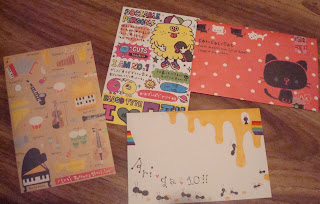Breakfast at 8:30, start school by 9. We try to do Math first every day. That takes about 45 minutes, then we take a quick break. (So I can get more coffee and Dude can eat, since he's never hungry when the rest of us are.) Language Arts takes an hour or so, depending on what we're doing. Mondays and Thursdays the kids will do 30 minutes of Rosetta Stone German and then have lunch. The other days are D.E.A.R. time before lunch. Afternoons are spent on Science or History, alternately. Wednesday afternoons are reserved for Art because the kids are tired after their swim lessons. Fridays are more independent: Teaching Textbooks for Math and workboxes or independent reading. This year we'll try to finish school by 2:30 and have all chores done by 3.
We've discovered that we really like unit studies, so there will definitely be days when we dump the whole schedule and just focus on whatever we're into at the time. We've already started a biomes study and will be "traveling" to Africa soon. I created our daily schedule to make sure that we covered all the math and language arts that we're "supposed" to, but we also enjoy ditching the schedule and following our interests. Freeeeedom!

Blog hops are fun! Can't wait to see what others are doing this year!


















































